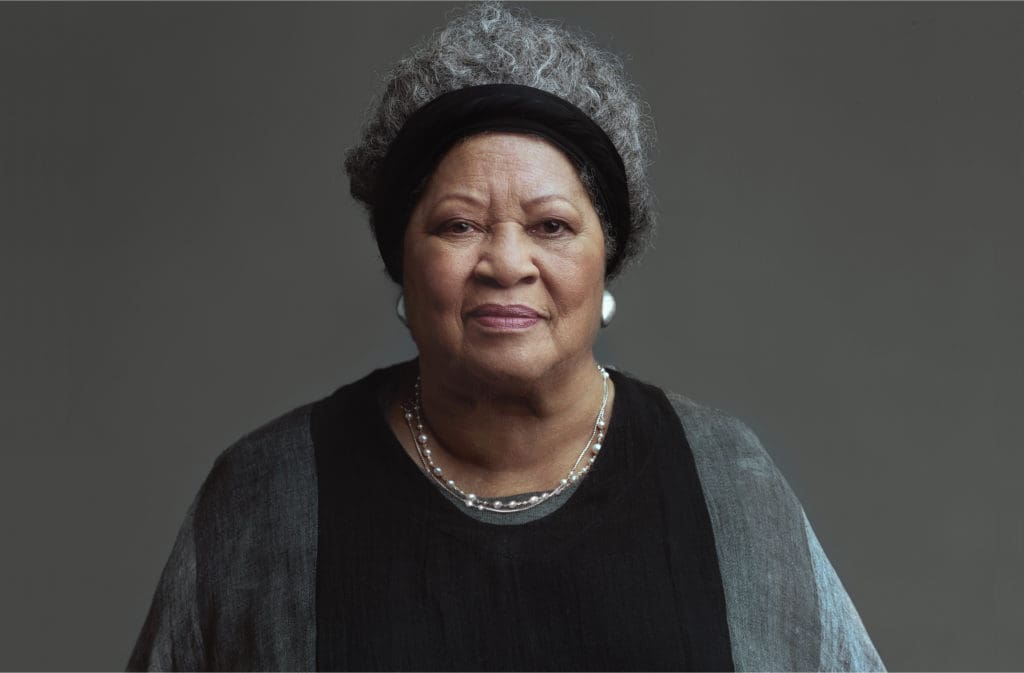
I’m embarrassed to admit that when I sat down to watch Timothy Greenfield-Sanders’s new documentary, Toni Morrison: The Pieces I Am, I had never read one of Morrison’s novels. I had heard she was a great writer, but never gotten farther than placing Beloved on my to-read list. I had intended to write this review without feeling obligated to read any of her work, but after the film’s nearly 2-hour runtime, I immediately bought Jazz, The Bluest Eye and Sula and devoured them within a week. Such is the power of Toni Morrison and the film that tells her story.
Assembled from excerpts of Morrison’s work, clippings, archival footage and new interviews from colleagues, admirers and Morrison herself, Greenfield-Sanders’s film is first and foremost a tribute to one of America’s most important living writers. Everyone from the likes of The New Yorker’s Hilton Als, Morrison’s friend, Fran Liebowitz and even Oprah pay tribute. Based solely on testimonies like scholar Davíd Carrasco’s, where he calls Morrison’s writing “The Emancipation Proclamation of the English Language,” those who aren’t familiar with Morrison would be convinced of her skill, but Greenfield-Sanders is sure to let Morrison and her novels speak for themselves too.
He begins with her 1970 début novel, The Bluest Eye. As Morrison explains it, she wrote the book, which is largely told from the perspective of and centers on the experiences of young black girls, to subvert the legacy of Uncle Tom’s Cabin’s Topsy, a mischievous and ridiculous character who spawned decades of imitators. Her goal with the novel was to explore the question, “where does a child learn self-loathing?” It’s a colossal undertaking for a book not much over 200 pages, but by letting Morrison explain her process and placing excerpts of reviews from the novel’s release onscreen, Greenfield-Sanders conveys how seminal the work is in American literature.
In this case, it’s the reviewers’ discussion of Morrison’s voice in the novel that’s most interesting. Many dismiss her early work for being specific to the black experience and some even suggest that she can’t create serious work until she writes outside of that experience. But Morrison immediately questions that condescension, noting that her whole point is to reject the assumption and therefore supremacy of a white, male perspective, “as if our lives have no meaning outside the white gaze.” It’s a compelling moment and one that serves to not only give us a glimpse into Morrison’s thinking, but emphasizes what makes her writing so revolutionary.
Indeed, one of the best things about The Pieces I Am is how much it allows the audience to understand the thought and, frankly, genius behind Morrison’s work. Some of that is small and largely inconsequential, like the fact she usually wakes up very early to write for 3-4 hours because she feels “smartest” in the morning. Others are more poignant, like that fact that Song of Solomon features her first male protagonists because her father’s death drove her to want to explore black men’s perspectives in the same way she had with black women. However, perhaps the most striking thing we learn of Morrison’s process is just how much it tells us about the power of her imagination and empathy. As she explains of her approach to the writing classes she’s taught at various universities like Princeton and her alma mater, Howard, against the conventional wisdom of writing what you know, she tells her students, “I don’t want you to write about your little life.”
Still, fascinating as those dives into Morrison’s process may be, they may be too in-depth for viewers who aren’t process nerds or already familiar with her work. However, while Morrison may be best known for her own writing, Greenfield-Sanders also makes a case for how important Morrison’s time as an editor at Random House is to her legacy. As political activist Angela Davis explains in an interview, she initially wasn’t interested in publishing a memoir, but, “Toni Morrison is extremely persuasive.” Morrison also details her time accompanying Muhammad Ali on his book tour for The Greatest: My Own Story, which she edited. As Morrison explains, while Ali initially pushed back against her authority, she was able to handle him because she’d already done so many times being a black woman in the publishing world. As she succinctly–and brutally–puts it, “I was more interesting than they were, I knew more than they did and I wasn’t afraid to show it.”
Indeed, perhaps the most gratifying thing about the film is the way it subtly speaks to the way that Morrison achieved so much in a world where others saw both her gender and race as liabilities to her success. She may still write in the mornings because she, “wants to beat the sun,” but Morrison also started doing that because she was a single mother and the mornings before her children woke up were the best times for her to write. And while it would certainly be fascinating to hear more about her work-life balance, as Morrison puts it, Chloe Anthony Wofford, her birth name, doesn’t do documentary interviews. For someone who’s given us so much already, it’s hard to fault Toni Morrison: The Pieces I Am for respecting that.

